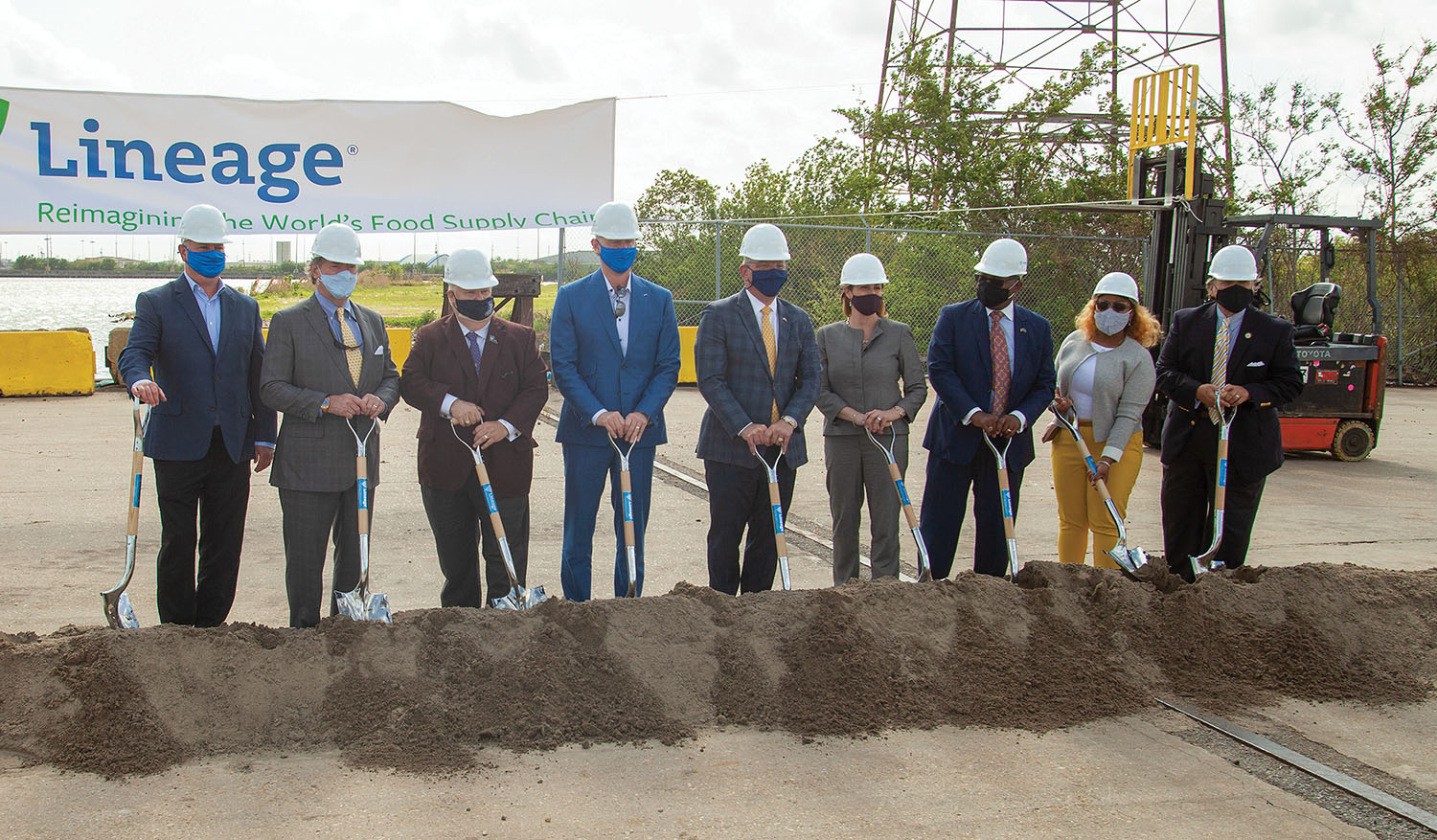Louisiana Gov. John Bel Edwards, Port NOLA President and CEO Brandy Christian, and Greg Lehmkuhl, president and CEO of Lineage Logistics, gathered at the New Orleans Cold Storage (NOCS) facility on the Gulf Intracoastal Waterway in New Orleans East April 6 to break ground on a $42 million expansion project.
Lineage Logistics, which globally operates more than 340 refrigerated facilities that account for more than 2.1 billion cubic feet of cold storage capacity, acquired New Orleans Cold Storage, which also operates a facility at the port’s Henry Clay Avenue Wharf, in 2020 as part of its acquisition of Emergent Cold. With roots going back to the 1880s, New Orleans Cold Storage is the oldest refrigerated cargo storage facility in the United States.
In total, the two Lineage facilities allowed the Port of New Orleans to export 380,000 tons of poultry in 2020. Between the New Orleans East and Henry Clay facilities, Lineage has the capacity to blast-freeze an astonishing 2.8 million pounds of product to zero degrees in a 24-hour period.
The expansion project will grow the New Orleans East facility from 160,000 square feet to 304,000 square feet and will create an estimated 50 jobs, which will grow the workforce at the site to 238. Louisiana Economic Development estimates the expansion will also create 56 new indirect jobs. That’s in addition to the 140,000 square feet of capacity at the company’s Henry Clay facility, which opened in 2012.
“The Lineage Logistics project at the Port of New Orleans is a boon for the city of New Orleans and our entire state,” Edwards said. “The value-added exports of Lineage Logistics will continue to strengthen Louisiana’s $1.6 billion poultry industry, including nearly 300 commercial broiler producers throughout 11 parishes. We welcome this significant new investment and its economic impact across Louisiana.”
To make the project a reality, the state of Louisiana provided $10 million in capital outlay funds, and the Port of New Orleans supplied $2 million. Lineage will invest the remaining $30 million needed for the project.
“This expansion is critical due to increasing worldwide demand for U.S. poultry, primarily from Angola, Cuba, Hong Kong, Mexico and Taiwan,” said Mike McClendon, president of international operations for Lineage and the company’s executive vice president of network optimization. “Lineage and Port NOLA have worked closely on this project to accommodate growing volumes and new lines of export agriculture commodities and a growing trade of fresh produce imports.”
In addition to handling poultry for export, the expanded capacity will support the import of fresh produce into the port as well.
“Port NOLA is elated to see this project move forward,” Christian said. “Poultry exports have traditionally been a strong segment of our cargo portfolio and, due to worldwide demand, we see poultry and other temperature-sensitive cargoes as critical to Port NOLA’s future.”
Louisiana Department of Agriculture and Forestry Commissioner Mike Strain was on hand to put into perspective the far-reaching impact that growing the port’s poultry export business line really has on the entire state.
“The benefit of this project cannot be overstated,” Strain said. “Between 30 percent and 40 percent of the poultry exported through this facility is produced and processed at Louisiana commercial broiler farms, and the Lineage project is critical, not just for Louisiana’s poultry industry, but for our soybean farmers as well. Soybeans feed our poultry industry, and our poultry industry feeds the world.”
Logistically, cargo moves into both the New Orleans East and Henry Clay facilities by truck and then is exported either by container or breakbulk ship. According to the Port of New Orleans, both facilities can load breakbulk ships, while refrigerated containers are loaded on site and transported to the port’s Napoleon Avenue Container Terminal, where they await export.




